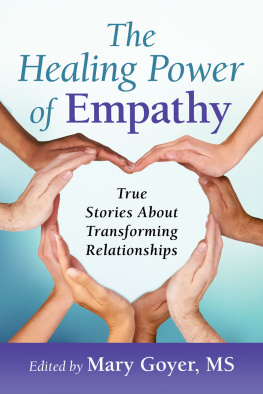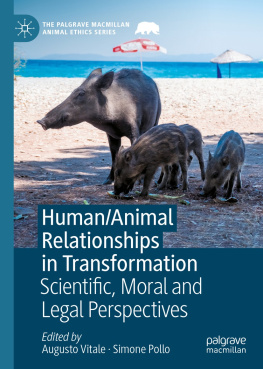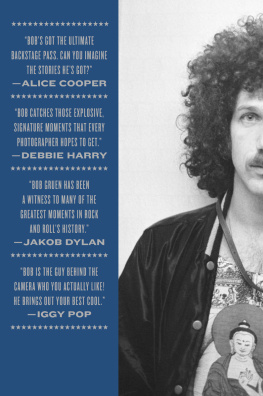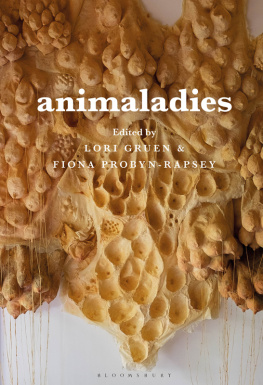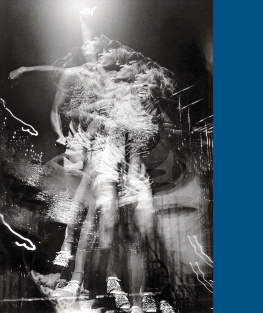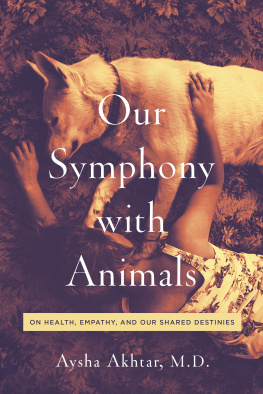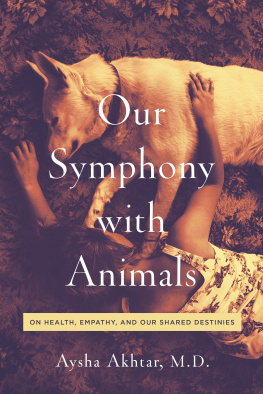O F R ELATED I NTEREST
Carol J. Adams
Neither Man nor Beast
Feminism and the Defense of Animals
pp, 973-1-59056-508-7, paperback
Leonardo Caffo and Valentina Sonzogni
An Art for the Other
The Animal in Philosophy and Art
pp, 973-1-59056-489-9, paperback
Sherry F. Colb
Mind If I Order the Cheeseburger?
And Other Questions People Ask Vegans
pp, 973-1-59056-384-7, paperback
Mylan Engel and Kathie Jenni
The Philosophy of Animal Rights
A Brief Introduction for Students and Teachers
pp, 973-1-59056-177-5, paperback
pattrice jones
The Oxen at the Intersection
A Collision
pp, 973-1-59056-462-2, paperback
Jo-Anne McArthur
We Animals
pp, 973-1-59056-426-4, hardcover
As a scientist who has spent thousands of hours observing animals, I have long valued empathy as a tool in my own work. But scientists are taught not to empathize, but rather to remain detached and objective in observations of other animals. Naming animals and assigning them personalities were widely frowned upon as being too anthropomorphic and non-scientific. But, this is where science has gone wrong. I would not have been able to understand and appreciate many different patterns of behavior if I weren ' t empathizing with the animals I studied. Empathy lays the groundwork for figuring out what questions to ask and how to go about answering them.
2015
Lantern Books
Second Place
Brooklyn, NY 11231
www.lanternbooks.com
Copyright Lori Gruen 2015
All rights reserved. No part of this book may be reproduced, stored in a retrieval system, or transmitted in any form or by any means, electronic, mechanical, photocopying, recording, or otherwise, without the written permission of Lantern Books.
Printed in the United States of America
The cover photo by Jo-Anne McArthur/We Animals depicts Rachel Hogan of Ape Action Africa in Cameroon with rescued gorillas.
Library of Congress Cataloging-in-Publication Data
Gruen, Lori.
Entangled empathy : an alternative ethic for our relationships with animals / Lori Gruen.
pages cm
Includes bibliographical references.
ISBN 978-1-59056-487-5 (pbk. : alk. paper) ISBN 978-1-59056-557-5 (ebook)
Animal welfare Moral and ethical aspects. Animal rights. Human animal relationships. I. Title.
HV4708.G779 2015
' .3 dc23
2014049780
Contents
Preface
Marc Bekoff
S O MANY DISCUSSIONS about our relationships with other animals focus on rights or welfare. I prefer to think in broader terms, about compassionate living. As we destroy the homes of billions of nonhuman animals, forcing them into closer, often fatal, contact with humans who themselves don ' t have their rights acknowledged, we need to address more adequately the growing conflicts that are leading to the demise of our planet and all of her inhabitants.
Lori Gruen ' s Entangled Empathy provides a powerful new way of thinking about our ethical responsibility to protect animals. With sensitivity and passion, Gruen helps us go deeper into understanding the ways that empathy can guide us to resolve conflicts among humans and between humans and other animals, and act to try to stem the destructive tides.
Empathy is not simply a necessary perspective for scientific understanding. It also has deep evolutionary roots. Jean Decety, a neuroscientist, recently concluded that, There is strong evidence that empathy has deep evolutionary, biochemical, and neurological underpinnings. Even the most advanced forms of empathy in humans are built on more basic forms and remain connected to core mechanisms associated with affective communication, social attachment, and parental care.
Empathy is something that is shared with other animals who don ' t practice science as we know it. Many studies have shown that nonhuman primates, dogs, mice, rats, elephants, and chickens all engage in empathetic behavior. This really shouldn ' t be too surprising given the role empathy plays in social cooperation. I couldn ' t explain social play in which individuals cooperate to play fairly with one another without attributing empathy to other animals.
In my long-term research projects studying the details of social play in domestic dogs and wild canids, I learned that although play is fun, it is also serious business. When canids members of the dog family and other animals play, they use actions such as vigorous biting, mounting, and body slamming that could be easily misinterpreted. So it is important for them to communicate clearly what they want and expect. Animals at play are constantly working to understand and follow the rules and to communicate their intentions to play fairly. They fine-tune their behavior on the run, carefully monitoring the behavior of their play partners and paying close attention to infractions of the agreed-upon rules. Four basic aspects of fair play in animals are: ask first, be honest, follow the rules, and admit you ' re wrong. When the rules are violated, and when fairness breaks down, so does play. For example, wild coyote youngsters who don ' t play fair often find themselves excluded from their group and suffer higher mortality rates than those who remain with family and friends.
Empathy allows individuals to form and maintain social bonds and to understand and negotiate their social relationships. Nonhuman animal beings, like human beings, form intricate networks of relationships and live by rules that maintain a stable society. Without empathy, we would not be able to navigate our social worlds. So many human problems could be avoided and addressed if we were able to deepen our empathetic engagement with one another and the rest of nature.
Entangled Empathy guides us in doing just that and I hope it enjoys the wide readership that it deserves. A focus on empathy is just what is needed to make the world a better place for all animals, human and nonhuman alike.
Marc Bekoff is author of Rewilding Our Hearts: Building Pathways of Compassion and Coexistence (Novato, California: New World Library, 2014). He lives in Boulder, Colorado.
. The Neuroevolution of Empathy, Annals of the New York Academy of Science 2011 Aug; 1231:
Foreword
Amy Fultz and Cathy Willis Spraetz
F EW OF US take the time to reflect on empathy what it is, when it is important, what it can teach us. In this book, Lori Gruen explores the various ways that empathy works in our entangled relationships with each other as well as with other animals we have welcomed into our lives.
Working at Chimp Haven, a sanctuary for chimpanzees retired from biomedical research, the entertainment industry, and the pet trade, we have many opportunities to experience empathy, not only chimpanzee to chimpanzee, but also between chimpanzees and humans.
Chimp Haven ' s reason for existence is to serve the chimpanzees in our care and attend to their physical and psychological needs. In order to attend to those needs we are obliged to understand the lives of chimpanzees in both the wild and captivity. There are moments when, in order to figure out what a chimpanzee is trying to communicate, or why a chimpanzee is behaving in a particular manner, we have to consider the chimpanzees ' perspective and put ourselves in their place.
Kidd was retired to Chimp Haven from biomedical research. Around six months after his arrival, he began showing signs of stress and abnormal behavior, screaming and biting his own toes and hands. After witnessing this many times, we realized that Kidd was displaying these behaviors when the hose used to clean the chimpanzee areas was near him. At Chimp Haven, the chimpanzees are moved to different rooms or, when temperatures allow, outdoors when we clean the indoor areas, but the hoses sometimes need to be nearby. We wondered why this would cause Kidd stress.



